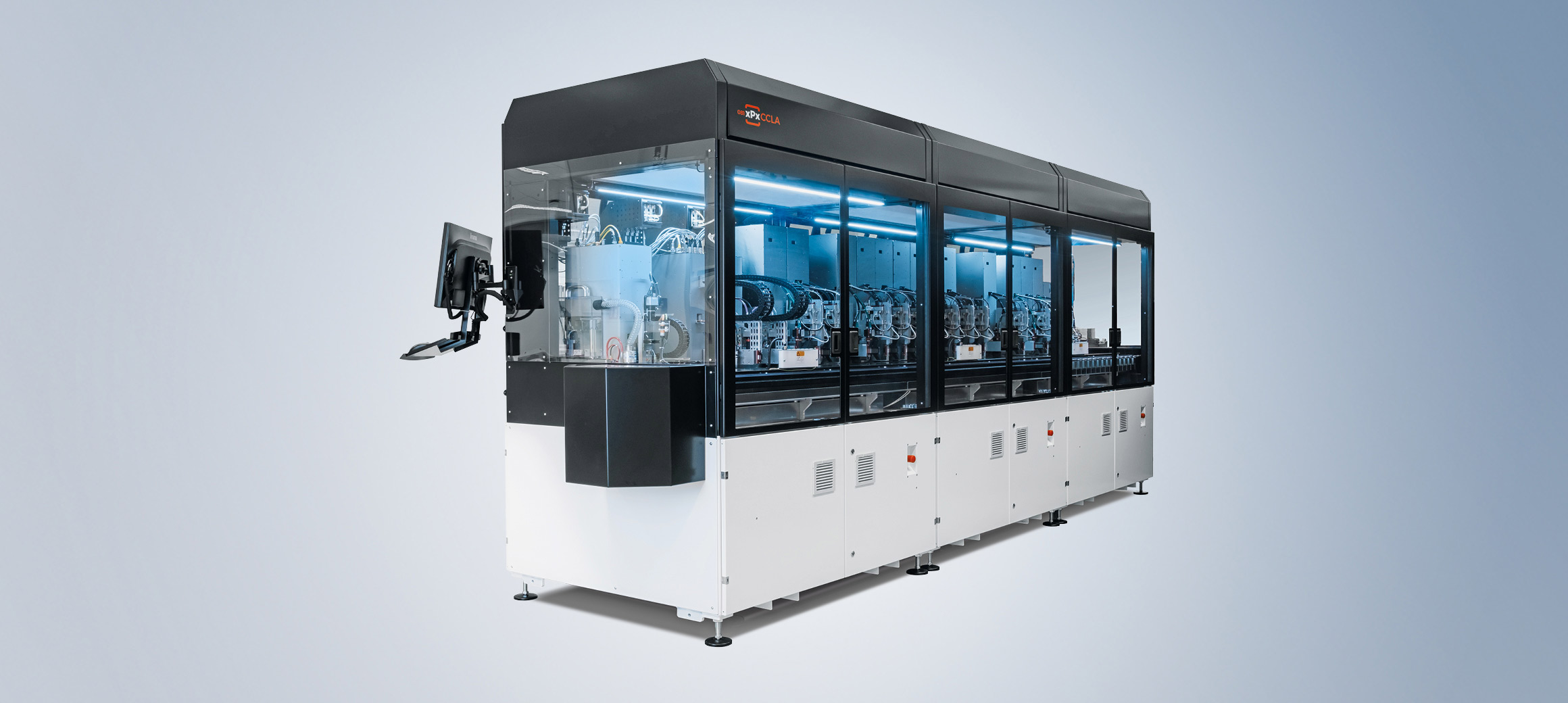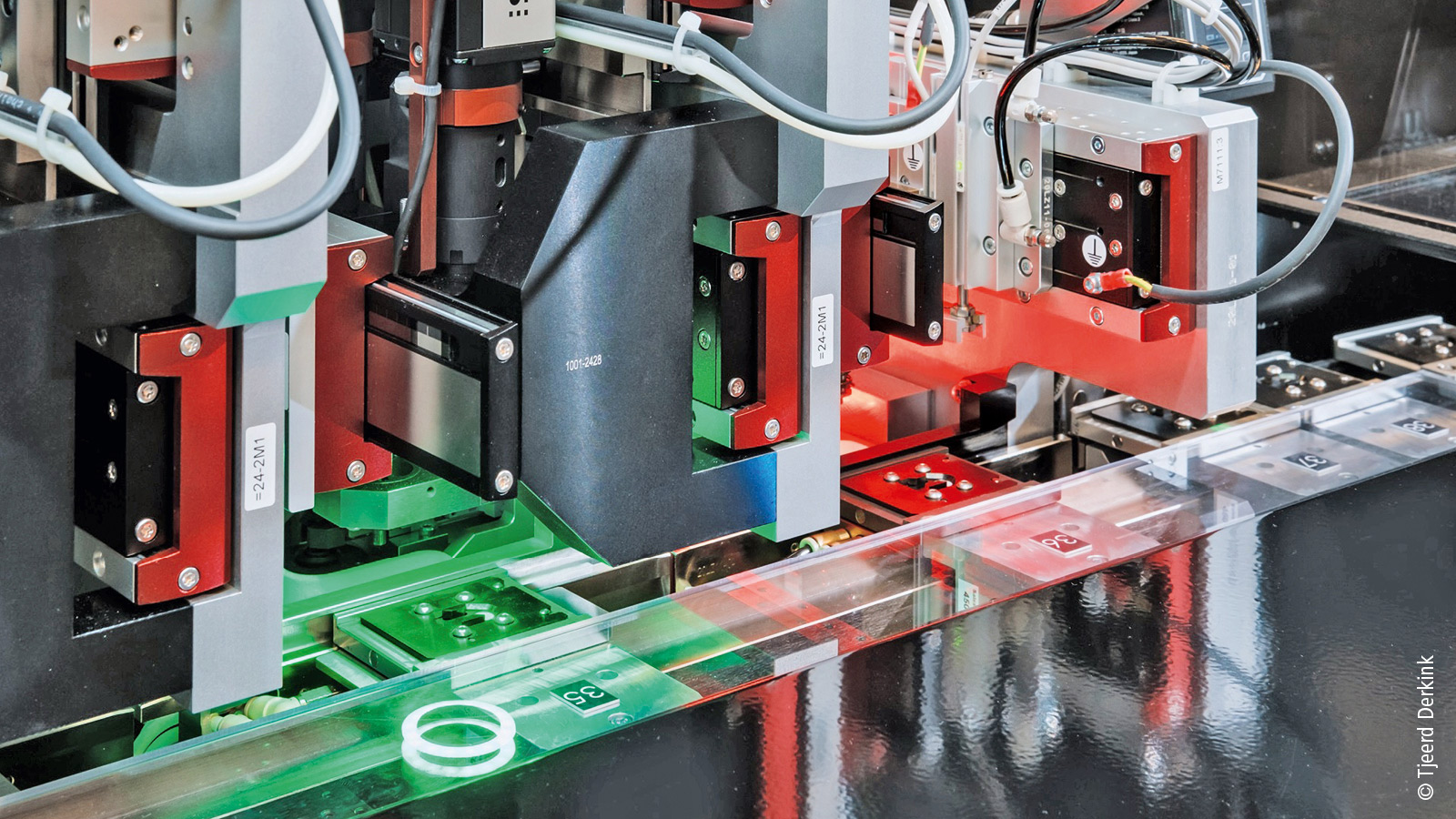

Intelligent product transport in microassembly
In the search for a precise transport system for fully automated electronic module assembly systems, the Dutch company IMS found a fitting solution with Beckhoff. With a repeatability of 10 µm, the linear transport system XTS meets the high requirements for product positioning. In addition, the modular range of XTS components provides the basis for easy system adaptation to changing production requirements.
IMS, based in Almelo, Netherlands, has been developing high-tech production lines for the microassembly of small components such as optical modules used in smartphones for almost ten years. With dozens of lines in the field, Henri Paus, Technical Director at IMS, can validate this success: "One of our customers in Asia is now the market leader in these kinds of systems. It is therefore highly likely that the camera module in many generations of smartphones will have been produced on one of our assembly lines."

Same production output despite higher processing times
Every year, smartphone manufacturers launch a number of new models. To keep pace with these short development cycles, flexible production systems are required that can be easily adapted to changing production conditions. Furthermore, modern smartphone have more high end components. "This development requires a different approach to assembly as the components of smartphones are becoming more numorous and smaller," says Henri Paus, outlining the need for action, because it became evident that the first generation of the IMS production line no longer met these requirements. "Another factor is that process steps are now necessary that, at 4 to 5 s, require around twice as much time as the previous average cycle time of 2 s," says Henri Paus.
To put it in context: a cycle of 2 s corresponds to an annual production of about 10 million units. The dosing times required nowadays for current optical devices would have meant a drastic reduction in production output figures with the existing system design. Ultimately, in completely sequential production systems, it is the slowest link that determines overall performance . Henri Paus: "Cutting the output in half was simply out of the question." Accordingly, "a flexible production platform had to be developed that could cope with many product changes and slower process steps," as Henri Paus summarizes. The individual process modules and workstations along the line offered sufficient performance, which meant that only a few improvements in terms of accuracy were required. "The biggest stumbling block was the transport system being used up to that point," recalls Henri Paus. A remedy could be found here with the eXtended Transport System (XTS) from Beckhoff and – in particular – with its modularity and high level of software functionality.
Henri Paus outlines the main difference between XTS and the previous in-house development: "The movers are now no longer connected to one another and can therefore be moved independently as individual servo axes." This gives IMS the ability of buffering the movers after a fast process step and to have numbers of movers enter multiple slower workstations at the same time. "In this way, we manage to maintain high production output, despite the slow sub-process," says Henri Paus.
Flexibility for subsequent expansion
On other advantages, Henri Paus explains: "XTS not only suits the intricate products our customers work with, the modular transport system itself is also extremely flexible." If an assembly line needs to be retooled for a new product, it can be readily expanded. Doing so requires only the insertion of new cells in the production system, along with the additional workstations. The necessary expansion of the transport system for this purpose is made possible by the modular XTS system with a small grid dimension of 250 mm. Operators can resume production with the converted system within just a few hours. "This option is not available in competitor solutions," Henri Paus says.
Working together with the XTS specialists from Beckhoff, a custom-fit solution was designed in the form of pre-assembled and tested modules that incorporates the GFX guide rail system from HepcoMotion. Henri Paus adds: "It's not just the mechanics that have to be able to disconnect quickly. Electronics and control must also be prepared for disconnection with the correct connectors and terminals. And by dividing the software into corresponding modules, we've provided flexibility in this aspect as well."
Precise positioning within exactly 10 µm
The optical modules to be mounted are usually 5 to 18 mm small and require a transport positioning accuracy of at least 50 µm. To achieve that accuracy, influencing factors such as temperature and the smallest vibrations of the XTS movers must also be taken into account. "The deep integration of XTS into our control architecture makes it easy to compensate for such influencing factors," explains Bernard Gerdes, who heads the Beckhoff branch in Enschede. For example, IMS has used additional sensors to compensate for temperature effects. Although the equipment is located in a temperature controlled cleanroom, the XTS transport system will vary in temperature. This needs to be compensated.
"Together with Beckhoff and Hepco, we succeeded not only in being very precise in the direction of transport, but also in terms of extremely accurate positioning of the product with respect to height," emphasizes Henri Paus. With vibration damping and the aforementioned temperature compensation, IMS can now position the carriers at the workstations with an exceptionally high accuracy of 10 µm.
First system confirms great flexibility
IMS has high expectations for the second generation of its optical module production line, as Henri Paus explains: "I expect that we'll be able to bring at least as many 3PX as first generation systems to market in the next few years. This is because small optical components, such as those found in smartphones, are also increasingly being used in monitors, drones and cars. In addition, the flexibility, modularity and scalability of the IMS platform are also attractive for completely different assembly applications, for example in the production of components for the medical technology and pharmaceutical industries."
IMS has already proven how flexible the 3PX production platform is with its first system. "When it was almost ready to ship, the customer inquired if they could use the system for products much larger than originally specified," says Henri Paus. "A complete redesign of the system was nevertheless not necessary. IMS just had to make some parts a bit bigger. A few weeks later, the rebuilt machine was ready to ship."